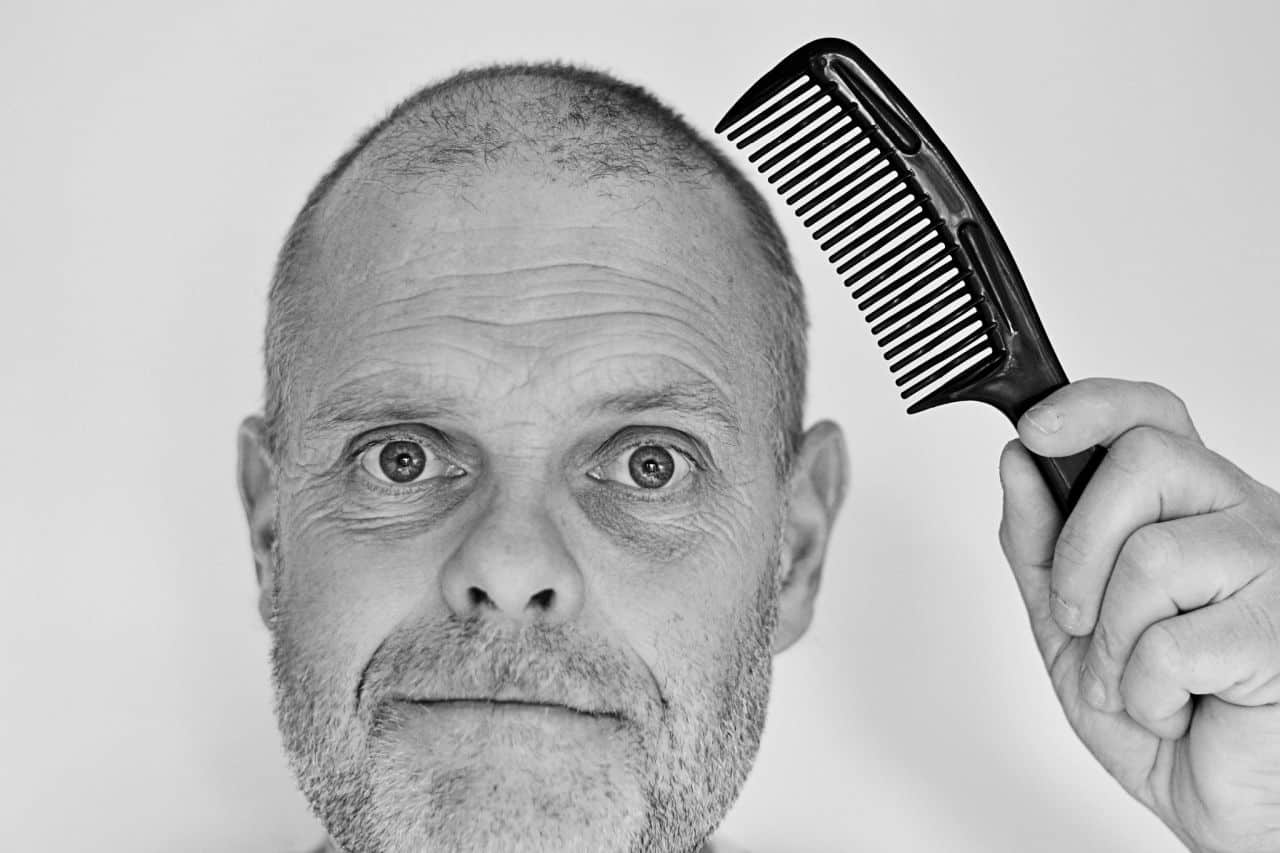Jargon Buster
When first setting out to research how to combat hair loss you will encounter a minefield of jargon and abbreviated terms.
• Male Pattern Hair Loss (MPHL) Is the gradual recession of the hair line from the crown and / or a ‘monk’s tonsure’ at the top of your head. If left untreated, the condition will continue to develop until hair coverage is restricted to the back and sides of the head. Although the statistical data is inconsistent, It is worth noting that MPHL is perfectly normal for half of males by the age of 50. Scientifically, the condition is known as androgenetic alopecia.
• Dihydrotestosterone (DHT) Is the culprit when it comes to hair loss. For genetic reasons, DHT is produced at various levels in different men and is derived from testosterone. At higher levels, this sex hormone can produce a shrinkage in hair follicles in men that are genetically sensitive to it. As testosterone is not involved in this process, such hair loss is not an indication of virility (or lack of it).
• Type II 5 Alpha Reductase Is an enzyme / protein that accelerates the chemical reaction that regulates the production of DHT.
Treatments.
If MPHL is not treated early enough then the only options available to you are hair pieces such as toupees (which can come with various stigmas attached) or an expensive hair transplant therapy.
If the condition is treated early enough, there are other choices available.
• DHT Blockers are ‘natural remedies’ containing a variety of unrelated materials and vitamin supplements. They are available on the high-street in various shampoos and lotions but there is no actual scientific evidence that can vouch for their effectiveness.
• Minoxidal is one of only two treatments recognised as being effective for MPHL. It is available as a lotion that is rubbed into the scalp twice daily. Noticeable hair growth will normally occur within 3 to 6 months and continue for as long as the medication is used. Stopping treatment will lead to further hair loss after 6 to 12 months. Minoxidal is not available on prescription and makes it is a more expensive option.
• Finasteride is the other recognised treatment. It is a prescription drug in pill form that is not available for free on the NHS. It acts by blocking the action of Type II 5 Alpha Reductase reducing the levels of DHT in the scalp and, as with Minoxidal, will continue to be effective as long as it is used. Conveniently, you can buy finasteride online via such organisations as Oxford Online Pharmacy.
The Psychological Impact of MPHL.
If you are younger, different societal / cultural pressures may come into play as MPLH develops. If, within your age-group, you are the only one experiencing a genetic sensitivity to DHT, you may suffer from feelings of inadequacy and low self-esteem. Similarly, you may be bombarded by a range of media telling you how to look and dress. This may lead to feelings of alienation / separation. You may also feel that the condition makes you less attractive, assertive or virile.
All of these pressures may lead to depression or chronic anxiety.
Moving Forward.
The general advice is to consult your doctor for informed advice. If, however, you need to be more discreet, there are many online pharmacy’s which have the option of an on-line prescription after the completion of a detailed questionnaire. If you are concerned about this approach, look out for The Quality Care Commission logo and verify the online pharmacy is fully registered, this way you will be assured that they have complied with the duty of candor and have also encouraged a culture of openness and honesty.

